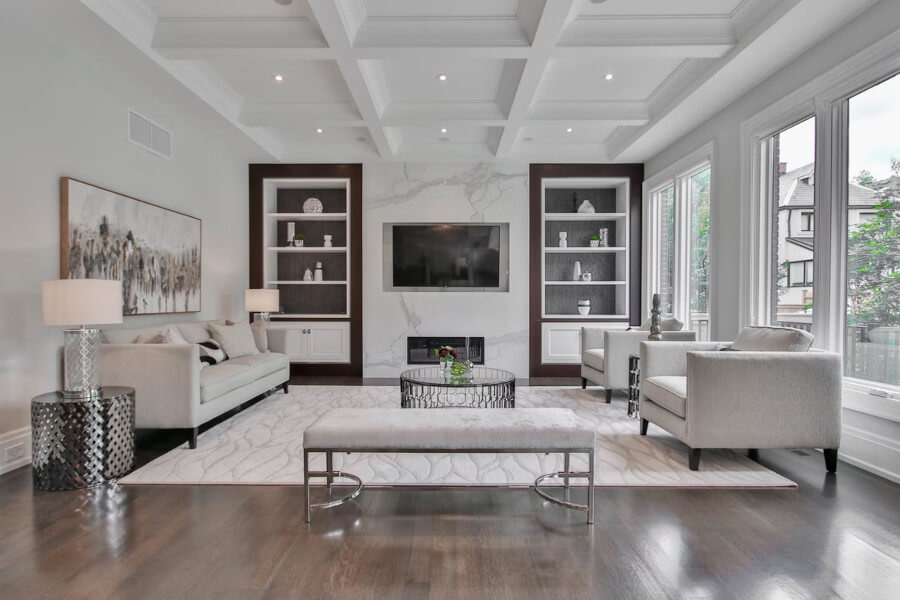Pros and Cons of Staging a Home for Sale
Staging a home is the process of preparing a property for sale by strategically arranging furniture, decor, and other items to make it more appealing to potential buyers. The goal of staging is to showcase the home's best features, create a welcoming atmosphere, and help buyers envision themselves living in the space.
Process of Staging a Home
- Decluttering: Clearing out excess belongings, personal items, and clutter is essential to create a clean and organized environment. This allows potential buyers to focus on the property itself rather than being distracted by clutter.
- Depersonalizing: Removing personal photographs, memorabilia, and highly personalized decor helps neutralize the space. The goal is to create a blank canvas that allows buyers to visualize their own belongings and style in the home.
- Furniture Placement: Stagers strategically arrange furniture to create functional and visually appealing living spaces. They aim to maximize the flow of the rooms, highlight architectural features, and create a sense of balance and proportion.
- Lighting and Accessories: Proper lighting can enhance the ambiance and make the home feel warm and inviting. Stagers may adjust lighting fixtures, add lamps, or emphasize natural light sources. They also use accessories such as artwork, rugs, pillows, and plants to add pops of color, texture, and personality to the space.
- Repairs and Upgrades: Staging may involve addressing any necessary repairs or updates to make the home look well-maintained and move-in ready. This could include fixing leaky faucets, repainting walls, replacing worn-out flooring, or updating outdated fixtures.
- Curb Appeal: Staging is not limited to the interior of the home. Improving the curb appeal, such as landscaping the front yard, repainting the front door, and tidying up the exterior, is also crucial. The goal is to create a positive first impression that entices potential buyers to explore further.

Pros of Staging a Home
- Enhanced Visual Appeal: Staging can help create an inviting and attractive environment, making it easier for potential buyers to envision themselves living in the space. Well-placed furniture, tasteful decor, and a cohesive design can make the home more visually appealing.
- Highlighting Key Features: By staging a home, you can draw attention to the property's unique selling points. Proper furniture arrangement can showcase the layout of the rooms, emphasize architectural features, and demonstrate the functionality of the space.
- Increased Perceived Value: A well-staged home can give the impression of a higher value. Buyers may perceive the property as well-maintained, move-in ready, and worth a higher price tag. This perception can result in more competitive offers and potentially higher selling prices.
- Professional Presentation: Staging helps present the home in a polished and professional manner. It creates a sense of order, cleanliness, and attention to detail. This can make a positive impression on buyers and instill confidence in the property's overall condition.
Cons of Staging a Home
- Cost: Staging a home can be an additional expense. Hiring a professional stager, renting furniture and decor, and investing in any necessary repairs or upgrades can add up. The cost may vary depending on the size of the property and the duration of the staging process.
- Time and Effort: Preparing a home for staging requires time and effort. It involves decluttering, organizing, and potentially depersonalizing the space. Additionally, coordinating with a stager, arranging furniture, and maintaining the staged appearance throughout the selling process can be demanding.
- Potential Feel of Inauthenticity: Staging may create a picture-perfect environment that is not reflective of how the home is typically used or lived in. Some buyers may find it difficult to connect with a staged home on an emotional level, as it lacks a personal touch and a lived-in feel.
- Limited Flexibility: Staging involves arranging the property to appeal to a broad range of potential buyers. This may require depersonalizing the space and adopting a neutral design that may not align with the seller's personal taste. It can limit the seller's ability to express their style and preferences.
In the end, the decision to stage a home depends on various factors, including the local real estate market, the property's condition, and the seller's budget and preferences. It may be worth consulting with a real estate professional to assess whether staging would be beneficial in your specific situation.
